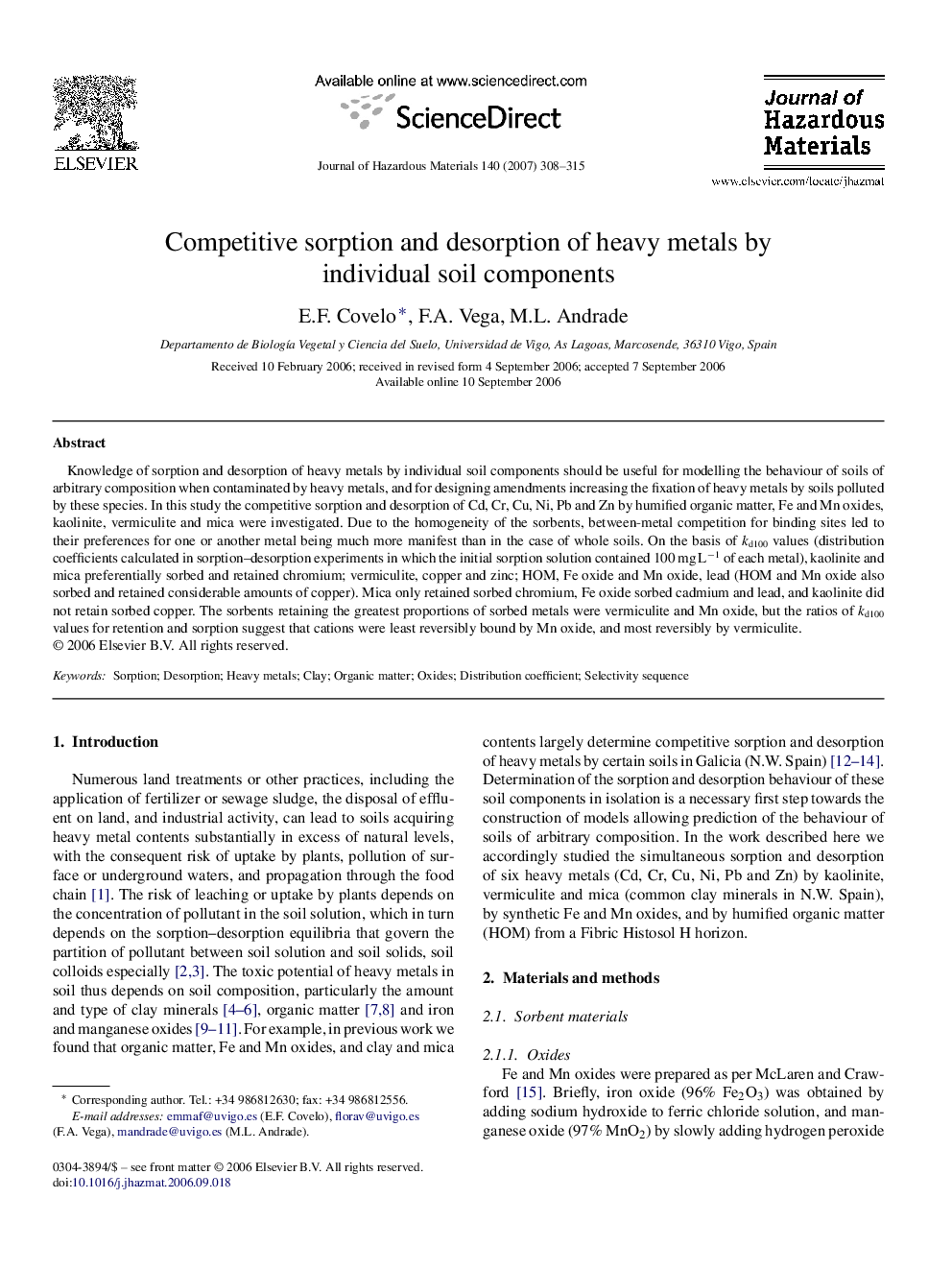| Article ID | Journal | Published Year | Pages | File Type |
|---|---|---|---|---|
| 585017 | Journal of Hazardous Materials | 2007 | 8 Pages |
Abstract
Knowledge of sorption and desorption of heavy metals by individual soil components should be useful for modelling the behaviour of soils of arbitrary composition when contaminated by heavy metals, and for designing amendments increasing the fixation of heavy metals by soils polluted by these species. In this study the competitive sorption and desorption of Cd, Cr, Cu, Ni, Pb and Zn by humified organic matter, Fe and Mn oxides, kaolinite, vermiculite and mica were investigated. Due to the homogeneity of the sorbents, between-metal competition for binding sites led to their preferences for one or another metal being much more manifest than in the case of whole soils. On the basis of kd100 values (distribution coefficients calculated in sorption-desorption experiments in which the initial sorption solution contained 100 mg Lâ1 of each metal), kaolinite and mica preferentially sorbed and retained chromium; vermiculite, copper and zinc; HOM, Fe oxide and Mn oxide, lead (HOM and Mn oxide also sorbed and retained considerable amounts of copper). Mica only retained sorbed chromium, Fe oxide sorbed cadmium and lead, and kaolinite did not retain sorbed copper. The sorbents retaining the greatest proportions of sorbed metals were vermiculite and Mn oxide, but the ratios of kd100 values for retention and sorption suggest that cations were least reversibly bound by Mn oxide, and most reversibly by vermiculite.
Keywords
Related Topics
Physical Sciences and Engineering
Chemical Engineering
Chemical Health and Safety
Authors
E.F. Covelo, F.A. Vega, M.L. Andrade,
